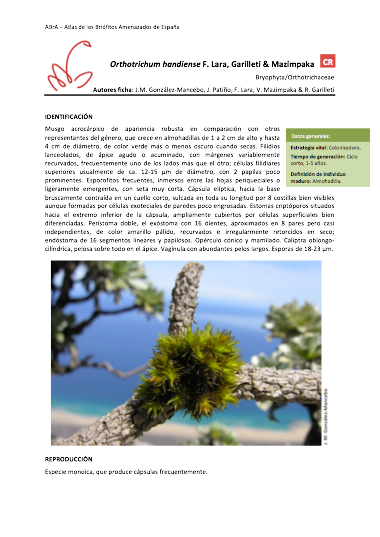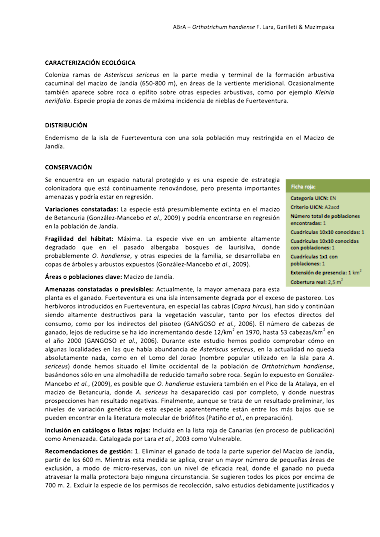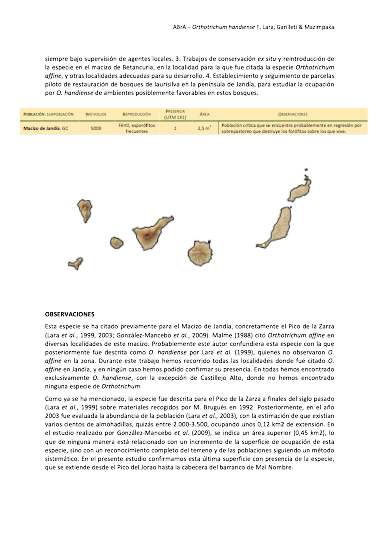ABrA
Species file model:


The Atlas is made of files for each of the selected species, containing the updated knowledge of their populations. The aim is to establish their category of threat following IUCN criteria as well as to detail the information that lead us to such qualification, allowing species monitoring, future revisions or even changes of the qualification because of eventual changes in the criteria followed.




























































